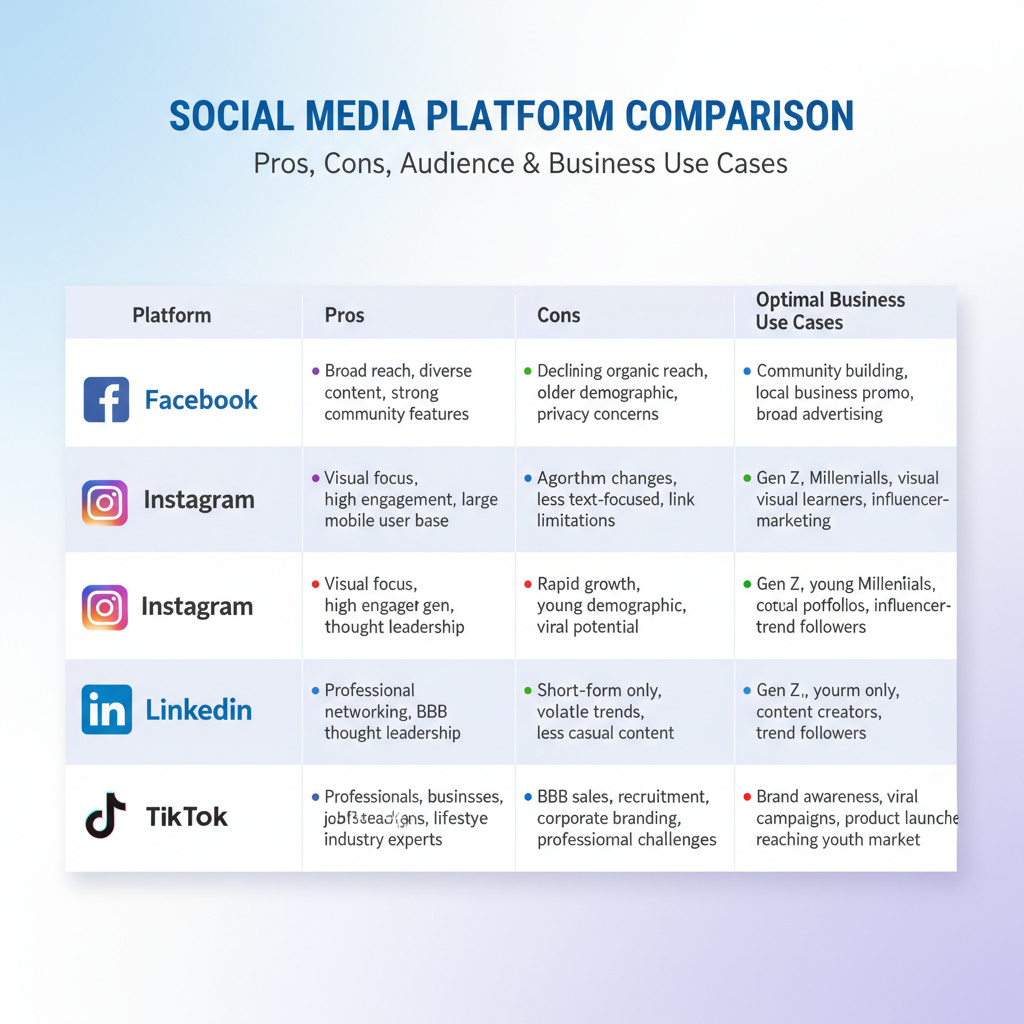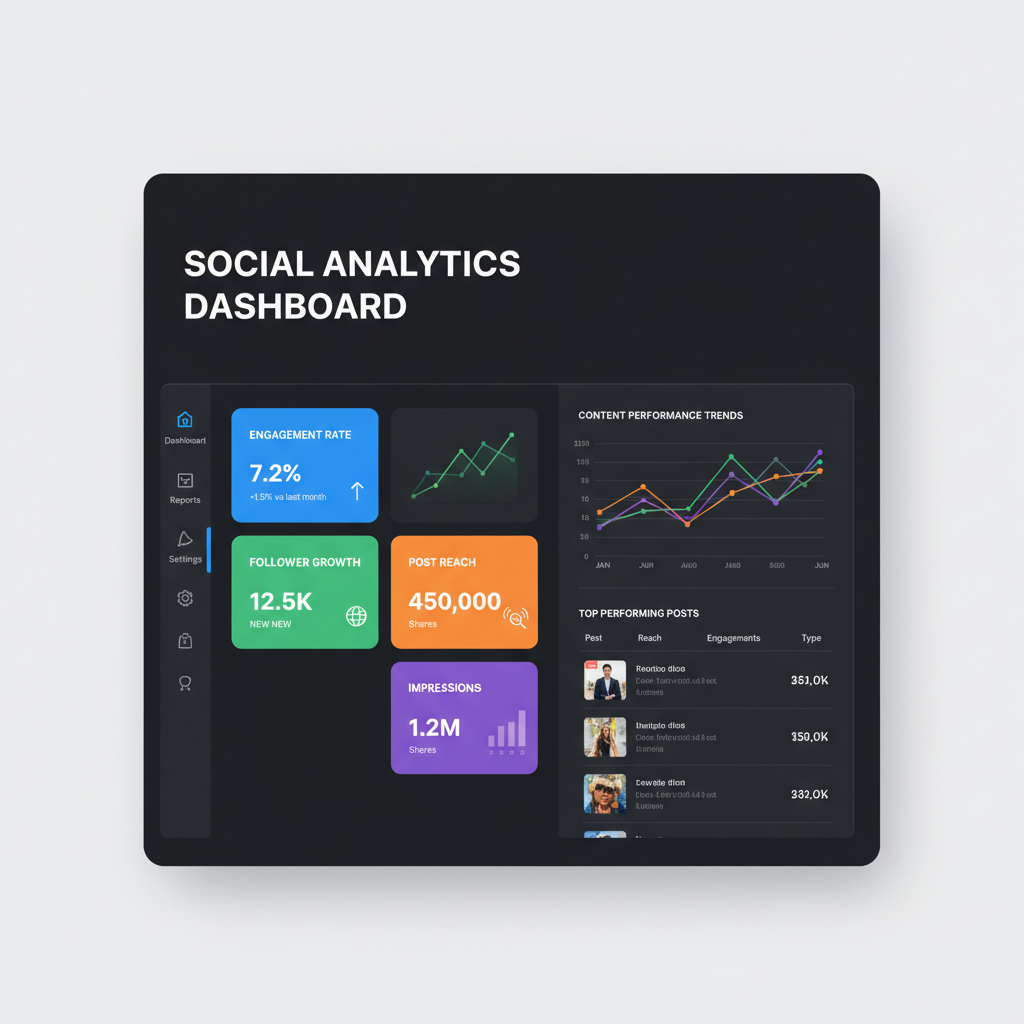Social Media Management Solutions for Business Success
Learn how to craft effective social media strategies, choose the right platforms, and use automation tools to boost engagement and business growth.

Social Media Management Solutions for Business Success
In today's fast-paced digital economy, mastering effective social media management solutions can be the difference between stagnation and success. With the right approach, social media platforms become powerful engines for brand awareness, customer engagement, and measurable ROI. This guide offers actionable strategies for overcoming common obstacles and adopting the best practices to ensure sustained business growth.

---
Common Problems Businesses Face with Social Media
Before implementing solutions, it’s important to identify the challenges that hold brands back:
- Time Constraints – Managing multiple platforms is time-intensive. Small teams frequently struggle to balance creation, scheduling, and engagement.
- Low Engagement – Inconsistent or irrelevant content often fails to spark audience interaction.
- Measuring ROI – Many brands find it difficult to connect social activity directly to sales or conversions.
- Platform Overload – Resources get stretched thin by attempting to be everywhere at once.
- Rapid Algorithm Changes – Sudden updates can derail established strategies.
---
Setting Primary Goals for Social Media Management
The foundation of any efficient social media management solution lies in clear, measurable objectives:
- Brand Awareness – Expand recognition in your target markets.
- Lead Generation – Acquire qualified contacts through valuable content and targeted campaigns.
- Customer Loyalty – Build trust and long-term relationships via authentic engagement.
Defined goals enable focused effort and precise measurement.
---
Develop a Clear Content Strategy
A winning solution for social media starts with a documented, persona-driven content plan.
Key steps to build your content strategy:
- Identify Audience Personas – Collect demographic, psychographic, and behavioral insights.
- Align Themes to Pain Points – Create content that addresses core audience concerns.
- Set a Tone and Voice – Ensure message consistency across platforms.
- Determine Formats and Frequency – Define post types and scheduling cadence.

Example Persona:
- Name: Marketing Manager Mary
- Goals: Staying updated; gaining actionable tips
- Preferred Content: Infographics, quick video tutorials
---
Choosing the Right Platforms
Selecting platforms strategically prevents wasted effort. Align networks with audience demographics and industry relevance.
| Platform | Main Demographic | Industry Fit |
|---|---|---|
| 25-54 | Retail, Local Businesses, B2C | |
| 18-34 | Fashion, Lifestyle, Food | |
| 25-54 | B2B, Professional Services | |
| TikTok | 13-24 | Entertainment, Consumer Brands |
| Twitter/X | 18-49 | News, Tech, SaaS |
---
Implement Social Media Management Tools
Automation and analytics save time and improve results. Popular options include:
- Hootsuite – Multi-platform scheduling and comprehensive analytics.
- Buffer – Streamlined scheduling with collaboration capabilities.
- Sprout Social – In-depth analytics plus CRM integration.
- Later – Visual planning ideal for Instagram.
Use these tools to post consistently, measure performance, and focus energy on strategy rather than administration.
---
Craft Engaging, Diverse Content Formats
Diversification keeps audiences interested. Consider blending formats such as:
- High-quality, original images
- Short-form videos (Reels, TikTok posts)
- Stories and polls for interaction
- Infographics to simplify complex topics
- Carousels for instructional guides
Monitor engagement to refine your mix.
---
Maintain Consistent Posting Frequency
Consistency reinforces credibility. Aim for a balanced schedule:
- Daily on fast-moving platforms (Twitter/X, TikTok)
- 3–5 times weekly on Instagram
- 1–3 times weekly on LinkedIn
Quality remains paramount—each post should resonate with your audience.
---
Leverage Data-Driven Insights
To keep your social media management solutions effective, regularly monitor metrics:
- A/B Testing – Compare variations of content or captions.
- KPI Tracking – Monitor reach, engagement rate, conversions, and CTR.
- Sentiment Analysis – Gauge audience perceptions.
Tools such as Google Analytics, platform insights, or social listening software aid in this process.
---
Adopt Strong Community Management Practices
Community management fosters brand allegiance:
- Respond promptly to messages and comments
- Handle public complaints with tact
- Promote user-generated content
- Personalize interactions to deepen relationships

---
Strategic Use of Paid Advertising
Paid campaigns can reach beyond organic limitations:
- Boosted Posts – Amplify top-performing organic posts
- Lead Ads – Gather contacts directly within the platform
- Retargeting – Re-engage visitors who previously interacted
Track spend against conversions to validate ROI.
---
Influencer Collaborations
Influencer partnerships can rapidly expand audience reach:
- Target influencers relevant to your niche
- Analyze engagement rates over follower counts
- Create mutually beneficial agreements
- Track outcomes with promo codes or unique landing pages
---
Stay Updated on Algorithm Changes
Social platforms update frequently. Stay informed about:
- Modifications to ranking signals
- Introduction of new content formats
- Adjustments to ad targeting parameters
Adapt swiftly to maintain visibility.
---
Establish a Crisis Management Plan
A robust social media management solution includes preparing for potential PR crises:
- Assign Roles – Identify spokespeople and response teams
- Templates – Use pre-approved, adaptable messaging
- Prompt Action – Transparency and speed are crucial
---
Measuring ROI Regularly
Measuring outcomes ensures resources are invested wisely.
ROI Formula:
ROI (%) = [(Total Revenue from Social Media – Total Costs) / Total Costs] × 100Regular evaluation reveals profitable platforms and campaigns.
---
Summary
Effective social media management solutions require a blend of strategic planning, consistent execution, and agile adaptation. By addressing common challenges, defining clear objectives, diversifying content, using the right tools, engaging communities, and tracking results, businesses can transform social media from a passive presence into a revenue-driving powerhouse.
Ready to upgrade your social strategy? Start implementing these solutions today and fuel your business success.


